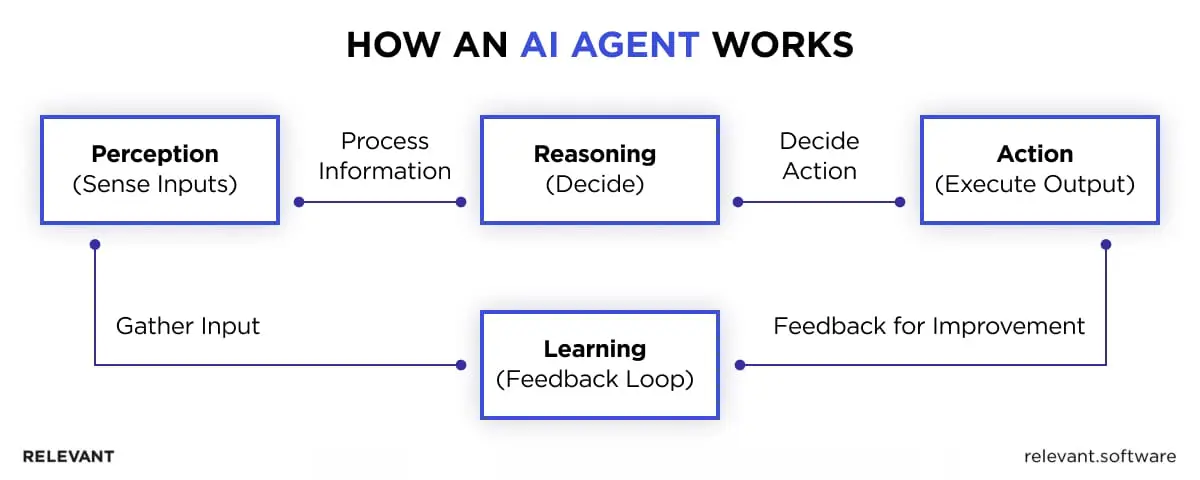Traditional automation has powered enterprise operations for nearly two decades — from cron jobs to RPA workflows, BPM pipelines, and basic rule-based orchestration. But 2025 marks a dramatic shift. Organizations are adopting autonomous AI agents capable of reasoning, planning, taking decisions, and executing tasks across complex systems.


This shift is driven by:
-
Foundation models becoming cheaper
-
Vector databases enabling real-time contextual memory
-
Agent frameworks like AutoGen, LangGraph, CrewAI, and MCP
-
Enterprises pushing toward adaptive, intelligent automation
The result: AI agents are beginning to replace rigid workflows with dynamic decision-making.
The Gap in Today’s Automation
Although traditional automation is reliable, it suffers from four major limitations:
1. Static, brittle workflows
If an API changes or a schema updates, the entire automation breaks.
2. No situational awareness
Automations cannot interpret logs, detect anomalies, or choose alternative paths.
3. Zero learning or memory
They execute instructions but cannot adapt or improve over time.
4. High maintenance overhead
Engineers constantly update scripts and pipelines to match evolving systems.
As organizations scale, these limitations create bottlenecks, operational delays, and increased errors.
The Proposed AI Use Case: Autonomous Enterprise Operations Agent
The next generation of automation is powered by AI agents that can:
-
read system states
-
analyze logs/errors
-
plan multi-step workflows
-
choose tools dynamically
-
self-correct and retry
-
learn over time
This transforms automation from static rule execution to adaptive problem-solving.
How It Works (Concise Workflow):

1. Perception
The agent observes the system:
-
log files
-
telemetry
-
user input
-
monitoring signals
2. Reasoning
It uses CoT (Chain of Thought), ToT (Tree of Thought), or ReAct (Reason + Action) to plan:
{
“plan”: [
“Analyze error logs”,
“Compare with past incidents”,
“Try restarting service”,
“Validate health check”
]
}
3. Tool Execution
The agent interacts with:
-
APIs
-
databases
-
shell commands
-
cloud resources
-
DevOps pipelines
4. Verification
Checks if the action succeeded.
If not, it tries alternative strategies automatically.
5. Memory Update
Stores context for future decisions.
This enables continuous improvement.
Mini Case Study: Realistic Enterprise Example
Problem
A Power BI dataset refresh frequently fails due to schema drift in upstream data.
Traditional Automation
-
Retry attempts
-
Hardcoded error handling
-
Manual investigation
-
Engineers fix mappings late at night
AI Agent Approach
The autonomous agent:
-
Detects refresh failure
-
Reads error logs
-
Analyzes upstream schema changes
-
Identifies mapping mismatch
-
Suggests fix or applies auto-mapping
-
Re-runs refresh
-
Logs resolution and updates Jira
Outcome
-
70% faster issue resolution
-
Zero manual intervention
-
Improved dataset SLA
-
Reduced after-hours workload
Practical Applications
1. DevOps & SRE
-
Auto-restart failing services
-
Debug deployments
-
Optimize infrastructure usage
-
Adaptive rollback strategies
2. Data Engineering
-
Auto-fix ingestion pipeline failures
-
Detect and correct schema drift
-
Optimize compute cost
-
Enforce governance
3. Business Intelligence
-
Self-healing dataset refresh
-
Automated semantic model checks
-
Dashboard QA and validation
4. Customer Service Bots
-
Intelligent triaging
-
Automated responses
-
Workflow routing based on context
Why It’s Optimistic
Autonomous agents upgrade the role of engineers instead of replacing them.
They:
-
reduce manual repetitive work
-
increase reliability and uptime
-
minimize outages caused by drift
-
help teams focus on innovation
-
support sustainable infrastructure usage
-
bring governance and safety through policy rules
AI agents enhance human capability by acting as always-on co-engineers.
Comparison With Current Approach
| Feature | Traditional Automation | Autonomous AI Agents |
|---|---|---|
| Workflow Type | Static | Dynamic & Adaptive |
| Error Handling | Predefined | Self-debugging |
| Learning | None | Memory-based |
| Orchestration | Hardcoded | AI-driven planning |
| Maintenance Cost | High | Lower over time |
| Scalability | Manual tweaks | Automatic adjustments |
In short:
Traditional automation executes.
AI agents understand, decide, and adapt.
Key Takeaways
-
Automation is evolving from deterministic rules to adaptive intelligence.
-
AI agents introduce perception, reasoning, tool use, and memory.
-
They dramatically reduce operational overhead and improve reliability.
-
Perfect fit for DevOps, DataOps, BI, and cloud engineering teams.
-
2025 is the tipping point for enterprise adoption.
FAQs
Q1. Do AI agents replace RPA?
Not entirely — they extend RPA with intelligence and decision-making.
Q2. Can AI agents run securely in enterprise environments?
Yes. They operate with RBAC, guardrails, audit logs, and strict tool access constraints.
Q3. What is required to adopt AI agents?
A combination of:
-
API-accessible tools
-
logging infrastructure
-
vector memory store
-
agent framework like AutoGen or MCP
